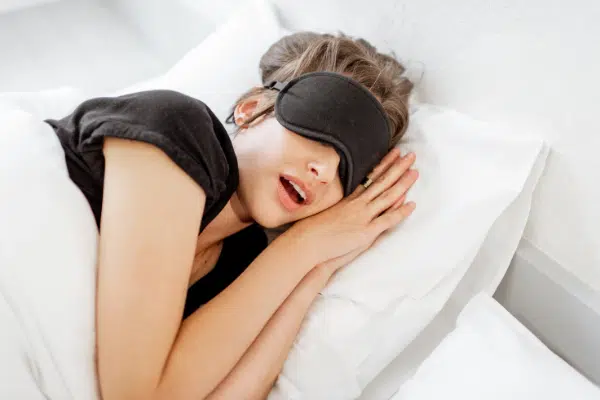Snoring is considered an annoying social problem that irritates bed partners and family members. But there’s more to this sleep disorder that affects nearly half the adult population.
Why do people snore in their sleep? Snoring is the sound that results when breathing is obstructed. Some factors that lead to snoring include poor muscle tone, a long soft palate, and bulky tongue muscle tissue. Snoring might also be a warning sign that you’re suffering from a condition that interferes with your breathing during sleep. Such conditions include nasal polyps, sinus infections, or a deviated septum.
Poor muscle tone causes partial collapse of the palate and tongue while you sleep, reducing the size of the breathing passage. That causes the palate to vibrate as you struggle to pull the air through the restricted route. While it’s easy to dismiss it as a bothersome habit, snoring can be a sign of a severe medical condition known as Obstructive Sleep Apnea (OSA).
Obstructive Sleep Apnea (OSA)
Affecting 15% of the people who snore, OSA is a serious medical condition characterized by unnecessary pauses in breathing while you sleep. Obstructive sleep apnea is loud snoring interrupted by multiple pauses and loud gasps. People suffering from sleep apnea have numerous breathing interruptions throughout their sleep. They can have as many as 20 to 30 breaks in breathing every hour as the upper airway collapses.
The frequent narrowing of the airway reduces the amount of air flowing into the lungs. As a result, the oxygen levels in your blood drop, causing your brain to jolt you from a deep sleep, so you can take a breath.
That’s the equivalent of having someone shake you awake every few minutes throughout the night while you sleep. It causes a surge of adrenaline in the body in addition to causing your cardiovascular system to work harder.
Sleep apnea denies you a chance to enjoy deep, restful sleep, and it may have a lasting negative health impact on your health.
If you experience any of these symptoms, it’s advisable to consult an ENT specialist immediately.
Signs and Symptoms of OSA
- Snoring loudly
- Pauses in your breathing during sleep
- Jolting awake while choking or gasping for air
- Waking up with a sore throat or a dry mouth
- Unexplained fatigue and daytime sleepiness
- Waking up with a headache
- Frequent bathroom breaks during the night
- Depression, mood changes, irritability, and loss of productivity
- Cardiovascular problems such as high blood pressure and stroke
Diagnosing Obstructive Sleep Apnea
Your bed partner or family members are likely to bring the symptoms to your attention. Consulting an ENT specialist is the best way to ascertain if you’re suffering from sleep apnea.
During your office visit, your ENT physician will perform a physical exam and take your medical history. They will ask questions about your sleeping habits and how you function during the day. You’ll be required to fill out a questionnaire for risk stratification. Be sure to provide accurate information to help the doctor classify you correctly for treatment.
The physician will also check your nose, mouth, and throat to establish the area and cause of obstruction. If your symptoms are severe, the doctor may order a sleep recording. You may perform such a recording at a sleep lab or at home. Doctors use three categories to rate sleep apnea — mild, moderate, and severe.
Causes of Obstructive Sleep Apnea
Partial obstruction in the upper air passage leads to the noisy sounds that characterize snoring during sleep. The upper airway includes the nose and where the soft palate and uvula meet the tongue and upper throat. Snoring happens when these collapsible structures strike against each other and vibrate as the air is forced between them.
Sleep apnea is a severe form of snoring. It occurs when there’s a severe airflow obstruction that compromises or curtails airflow into the lungs.
In children, snoring is often indicative of a problem with tonsil and adenoids. However, obstruction in adults may result from a combination of factors, making it challenging to identify and treat the conditions.
Factors that Contribute to Sleep Apnea
Poor tongue and throat muscle tone: The tongue tends to fall into the airway when the muscles are too relaxed. Or when the throat muscles are drawn into the airway from the side. Drugs that induce drowsiness and alcohol may exacerbate obstruction and muscle relaxation.
Bulky throat tissue: Children with large adenoids and large tonsils are predisposed to snoring. Overweight adults often have extra soft tissue around the neck that constricts the airway. People with enormous tongues are also susceptible to OSA.
Lengthy soft palate and uvula: A long palate reduces the opening between the nose and throat. The extra length turns the uvula or palate into a noisy flatter valve while you sleep.
Blocked nasal airways: It takes more effort to breathe in when you have a stuffy nose. The extra effort creates a vacuum in your throat, pulling in the floppy tissues in your throat. Some people snore terribly when they’re down with a cold, seasonal allergy, or a sinus infection. Deformities such as a deviated septum also lead to snoring and OSA.
Treating Obstructive Sleep Apnea
Sleep apnea treatments options are spread across medical and surgical methods. Medical interventions include continuous positive airway pressure (CPAP) treatment, positional therapy, oral appliances, and weight loss. The effectiveness of a treatment method depends on your ability to stick and follow the doctor’s recommendation.
If medical intervention is inadequate or with severe cases, your doctor may recommend surgery. Surgical procedures reduce the severity of the condition, support medical therapy, and often cure sleep apnea.
Popular Treatment Options
Nose: Nasal obstruction is often caused by polyps, allergies, and anatomical abnormalities. Allergy management and nasal sprays are the first lines of management. Structural problems are addressed by surgical treatment, such as deviated septum repair, turbinate reduction, nasal valve repair, balloon sinuplasty, FESS, or other types of sinus surgery.
Upper throat (tonsil, palate, and uvula): Treatment entail reconstructive surgery to widen the throat through repositioning or tissue removal. This may include a tonsillectomy with or without adenoidectomy or a UP3 procedure or an in-office laser-assisted uvuloplasty (LAUP).
Skeletal: The position and orientation of jawbones affect airway stability during sleep. Patients with retracted jaws or total upper airway collapse may need a Maxillomandibular Advancement (MMA) surgery. Sometimes the procedure entails widening a narrow upper jaw to accommodate the tongue and soft palate. The method is highly effective in combating sleep apnea and comes with fringe benefits such as improved bite and facial balance. A skilled and experienced oral surgeon (not an ENT) should carry out this procedure for optimal results.
Obstructive sleep apnea is a severe snoring problem that warrants a visit to an ENT specialist. The condition interferes with your ability to breathe while your sleep, endangering your health. It reduces the oxygen supply in your body and causes your heart to work harder while flooding your body with adrenaline.
Unattended sleep apnea can lead to serious health consequences, including high blood pressure, irregular heartbeat, stroke, and heart attack. Timely intervention by an ENT can help you treat or manage the sleep disorder.


